English as a Second Language, Level 4,ESL Courses,Open (ESLDO)


-
Name:English as a Second Language, Level 4,ESL Courses,Open (ESLDO)
-
Grade:ESL Courses
-
Prereq:None
-
Code:ESLDO
-
Type:Open
-
Credit Value:1
-
Develop Date:2021-01-01
-
Course Price:CAD $1300
-
Status:Active
Course Description:
This course prepares students with the skills and strategies they need to make the transition to college and university preparation courses in English and other secondary school disciplines. Students will be encouraged to develop independence in a range of academic tasks. They will participate in debates and lead classroom workshops; read and interpret literary works and academic texts. Write essays, narratives, and reports; and apply a range of learning strategies and research skills effectively. Students will further develop their ability to respond critically to print and media texts.
Aims and Objectives:
- Read and understand the language so that it can be demonstrated in various forms depending on the need of an hour.
- Develop a vocabulary by utilizing different methods and techniques.
- Write in various forms and styles with respect to the kind of audience.
- Apply different strategies in the writings.
- Demonstrate one’s ability to use English in terms of speaking, reading, writing and listening in the best possible manner.
- Understand responsibilities and rights of the Canadian people more effectively in an effort to prove one’s self as a better citizen of the Country.
- Use English level at his best in public dealings and social gatherings where there is a need for it.
- Enhance the ability to generate media content that is more attractive and responsive.
- Produce various media texts more effectively.
- Communicate in English at a level that is comprehensible for the person at the other end.
- Develop writing skills in order to make student able to deliver thought, requirements and ideas through writings.
- Extract the meaning from a written content within a limited time period by making use of various strategies.
- Extract the meaningful content from a given passage or material in the form of a graph or picture.
- Organize writing in a way to present ideas and thoughts in a comprehensive and attractive manner.
- Produce a language with a correct usage of basics of English including the grammar, punctuation and spelling.
- Translate different languages in case of developing English as a second language.
- Effectively apply English Language in order to communicate elegantly both verbally and non-verbally.
- Express ideas, thoughts, beliefs and needs through the English language as the language is most understood universally.
- Understand rules and regulations of the Ontario education system in a more efficient manner.
- Utilize English language as a tool in career selection.
Expectations:
- Listening and speaking
Throughout this course, students will:
- Demonstrate the ability to understand, interpret, and evaluate spoken English for a variety of purposes.
- Use speaking skills and strategies to communicate in English for a variety of classroom and social purposes.
- Use the correctly the language structures appropriate for this level to communicate orally in English.
- Reading and literature studies
By the end of this course, students will:
- Read and demonstrate understanding of a variety of texts for different purposes.
- Use a variety of reading strategies throughout the reading process to extract meaning from texts.
- Use a variety of strategies to build vocabulary.
- Locate and extract relevant information from written and graphic texts for a variety of purposes.
- Writing
By the end of this course, students will:
- Write in a variety of forms for different purposes and audiences.
- Organize ideas coherently in writing.
- Use correctly the conventions of written English appropriate for this level, including grammar, usage, spelling, and punctuation.
- Use the stages of the writing process.
- Socio-cultural competence and media literacy
Throughout this course, students will:
- Use English and non-verbal communication strategies appropriately in a variety of social contexts.
- Demonstrate an understanding of the rights and responsibilities of Canadian citizenship, and of the contributions of diverse groups to Canadian society.
- Demonstrate knowledge of and adaptation to the Ontario education system.
- Demonstrate an understanding of interpret, and create a variety of media texts.
Unit-wise Progression:
|
Unit
|
Title and Subtopics |
|
Unit 1 |
Fiction and Non-fiction
- Hours: 20 |
|
Unit 2 |
Poetry
- Hours :20 |
|
Unit 3 |
Media and Canada
- Hours :7 |
|
Unit 3 |
Novel
- Hours: 27 |
|
Unit 4 |
Drama
- Hours: 21 |
|
Culminating Activity – 12 Hours |
|
|
Final Term – 3 Hours |
|
|
Total – Hours 110 |
|
Teaching/Learning Methodologies:
The English curriculum is based on the premise that all students can be successful language learners. Since the overriding aim of this course is to help students use language skillfully, confidently and flexibly, a wide variety of instructional strategies are used to provide learning opportunities to accommodate a variety of learning styles, interests and ability levels. High-quality instruction will include the following:
- Instruction that is guided by the formative assessment takes into consideration students’ strengths and addresses their learning needs.
- Instructions that clarify the purpose for learning and helps students activate prior knowledge.
- Instruction that is differentiated to meet individual needs.
- Instruction that models learning strategies and encourages students to talk and reflect on their thinking and learning processes.
- Instruction that introduces a rich variety of activities that integrate expectations and provides explicit teaching of knowledge and skills.
- Instruction that provides opportunities for guided and independent practice.
- Instruction that encourages higher-level thinking skills (analysis, synthesis, evaluation).
- Instruction that encourages students to think about fairness, equity, social justice, and citizenship in a global society.
- Reading various works
- Vocabulary Building
- Directed Reading Activities
- Multimedia Production
- Direct Instruction
- Research Process
- Independent Study
- Writing Processes
- Portfolio
- Conferencing
- Guided Internet Research
- Expressing Another Point of View
- Guided Writing
- Independent Reading
- Reading Responses
- Media Analysis
- Response Journal
- Creative Writing
- Comparative Essay Writing
E-Learning Approach:
E-learning is not only a training method but it is a learning method that is tailored to individuals. It is found that different terminologies have been used to define learning that takes place online which actually makes difficult to develop a generic definition.
E-learning includes the delivery of content via Internet, Intranet, and Extranet, satellite broadcast, audio-video tape, interactive TV and CD-ROM. The term implies that the learner is at a distance from the tutor or instructor, that the learner uses some form of technology.
With attention to this new system of education that is spreading across the globe it’s imperative that the content of such study programs are enhanced and modified to serve both the learner and the instructor well whilst dealing with the gap of conventional studying methodologies. Thus the courses promise its reader an experience full of engagement, student-concentric approach, personalization and Interaction. Using a wide array of multimedia tools, cloud based LMS and diverse repository of subject tailored audio-visual material that student can utilize and learn in a stimulated work environment where he’s in charge of his work hours.
Our e-learners paddle through these courses in the mediation of skilled mentors to the finish line with understanding of their subject’s application into real world problems following a futuristic model of education.
Strategies for Assessment and Evaluation of Student Performance:
Assessment is the ongoing gathering of information related to the individual student’s progress in achieving the curriculum expectations of the course. To guide the student to his/her optimum level of achievement, the teacher provides consistent and detailed feedback and guidance leading to improvement. Strategies may include:
- Diagnostic assessment
- Formative assessment
- Summative assessment
- Performance assessment
- Portfolio assessment
- Rubrics
- Checklists
The final grade will be based on:
|
Weightage in Percentage
|
Categorical Marking Breakdown |
|
50% |
Course Work |
|
20% |
Culminating Activity |
|
30% |
Final Exam |
|
Assessment of Learning
|
||
|
Student Product |
Observation |
Conversation |
|
Learning Logs (anecdotal) Assignment Pre-tests (scale/rubric) Quizzes (scale/rubric) Rough drafts (rubric) Graphic organizers (scale) Peer feedback (anecdotal/checklist) Reports (rubric) Essays (rubric) Webbing/Mapping (rubric/scale) Vocabulary notebooks (anecdotal) Visual Thinking Networks (rubric) Tests (scale/rubric) Exams
|
Self-proofreading (checklist) Class discussions (anecdotal) Debate (rubric) PowerPoint presentations (rubric) Performance tasks (anecdotal/scale)
|
Student teacher conferences (checklist) Debate (rubric) Peer-feedback (anecdotal) Peer-editing (anecdotal) Oral pre-tests (scale/rubric) Oral quizzes (scale/rubric) Oral tests (scale/rubric) Question and Answer Session (checklist)
|
Resources Required by the Student:
- Microsoft Suite (Word, Excel, Power-point etc.)
- A laptop, or Mac, or Android, or any other operating system functional enough to use the web browser and use online software’s.
- Curriculum Reference: The Ontario Curriculum, English







